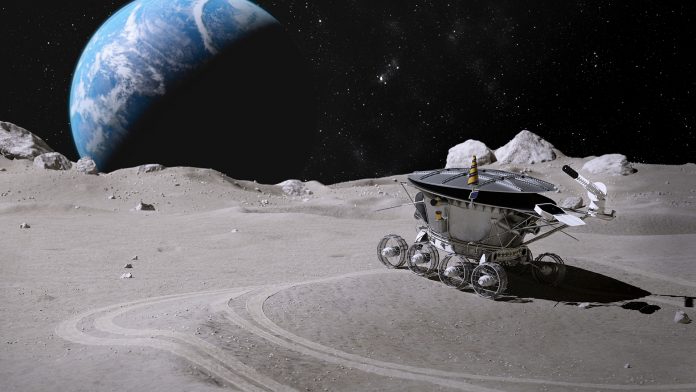The Rashid rover launches on the Moon today, using its wheels to expose different materials, including graphene, to the lunar surface.
The rover will land on a geologically rich and remotely explored area on the Moon’s nearside, which always faces the Earth. During one lunar day, which is equivalent to 14 days on Earth, Rashid’s graphene-coated wheels will move across the surface to investigate interesting geological features.
As part of this material adhesion and abrasion detection experiment, graphene-based composites on the rover’s wheels will be used to understand if they can protect spacecraft against harsh conditions on the Moon, particularly regolith (lunar dust).
For this experiment, Graphene Flagship partners, the University of Cambridge and the Université Libre de Bruxelles (ULB), partnered with the Mohammed bin Rashid Space Centre (MBRSC) and the European Space Agency (ESA).
The challenges of lunar dust
Lunar dust is made of extremely sharp, tiny, and sticky grains. Since the Apollo missions, it has been one of the biggest challenges lunar missions have had to overcome. The material is also responsible for mechanical and electrostatic damage to equipment, and therefore, causes hazards for astronauts. It clogs spacesuit joints, obscures visors, erodes spacesuits and protective layers, and is a potential health hazard amongst many issues.
Researchers from the Cambridge Graphene Centre produced graphene and polyether ether ketone (PEEK) composites. The interaction of these composites with regolith on the Moon will be investigated.
The graphene samples will be monitored via an optical camera, which will record footage throughout the mission. Then, researchers will gather information and suggest adjustments to the path and orientation of the rover. Images obtained will be used to study the effects of the Moon environment, along with regolith’s abrasive stresses on the samples.
“Being able to follow the Moon rover’s progress in real time will enable us to track how the lunar environment impacts various types of graphene composites, thereby allowing us to infer which of them is most resilient under such conditions.
“This will enhance our understanding of how graphene-based composites could be used in the construction of future lunar surface vessels,” explained Sara Almaeeni, MBRSC science team lead, who designed Rashid’s communication system.
How graphene-based materials will advance space exploration
“New materials, such as graphene, have the potential to be game changers in space exploration. In combination with the resources available on the Moon, advanced materials will enable radiation protection, electronics shielding, and mechanical resistance to the harshness of the Moon’s environment.
“The Rashid rover will be the first opportunity to gather data on the behavior of graphene composites within a lunar environment,” says Carlo Iorio, Graphene Flagship Space Champion, from ULB.
Leading up to the Moon mission, several inks containing graphene and related materials, such as conducting graphene, insulating hexagonal boron nitrade, and graphene oxide, were also tested on the Materials Science Experiment Rocket 15 mission, which successfully launched last week.
This will provide new information about the printing of graphene and related materials inks (GRMs) in weightless conditions, which will contribute to the development of new addictive manufacturing procedures in space, such as 3D printing. Such procedures are key for space exploration, during which replacement components are often needed and could be manufactured from functional inks.
“Our experiments on graphene and related materials deposition in microgravity pave the way for addictive manufacturing in space. The study of the interaction of Moon regolith with graphene composites will address some key challenges brought about by the harsh lunar environment,” stated Yarjan Abdul Samad, from the Universities of Cambridge and Khalifa, who prepared the samples and coordinated the interactions with the United Arab Emirates.
Andrea Ferrari, Science and Technology Officer and Chair of the Management Panel of the Graphene Flagship, concluded: “The Graphene Flagship is spearheading the investigation of GRMs for space applications. In November 2022, we had the first member of the Graphene Flagship appointed to the ESA astronaut class. We saw the launch of a sounding rocket to test printing of a variety of GRMs in zero-gravity conditions, and the launch of a lunar rover that will test the interaction of graphene—based composites with the Moon surface.
“Composites, coatings, and foams based on GRMs have been at the core of the Graphene Flagship investigations since its beginning. It is thus quite telling that, leading up to the Flagship’s tenth anniversary, these innovative materials are now to be tested on the lunar surface.
“This is timely, given the ongoing effort to bring astronauts back to the Moon, with the aim of building lunar settlements. When combined with polymers, GRMs can tailor the mechanical, thermal, electrical properties of then host matrices. These pioneering experiments could pave the way for widespread adoption of GRM-enhanced materials for space exploration.”









